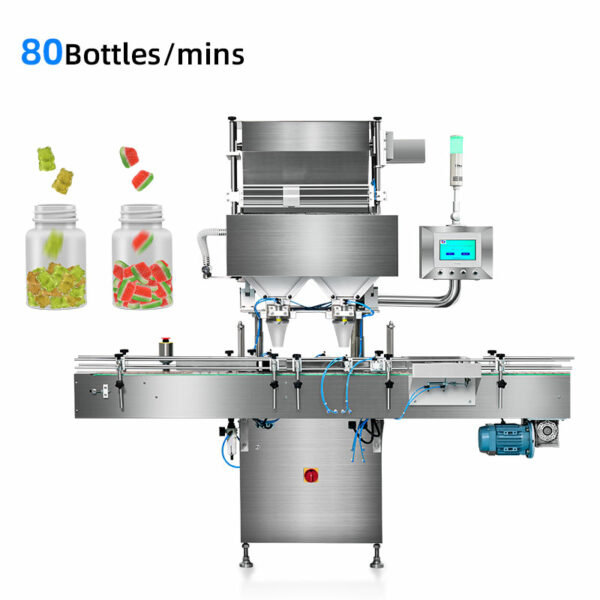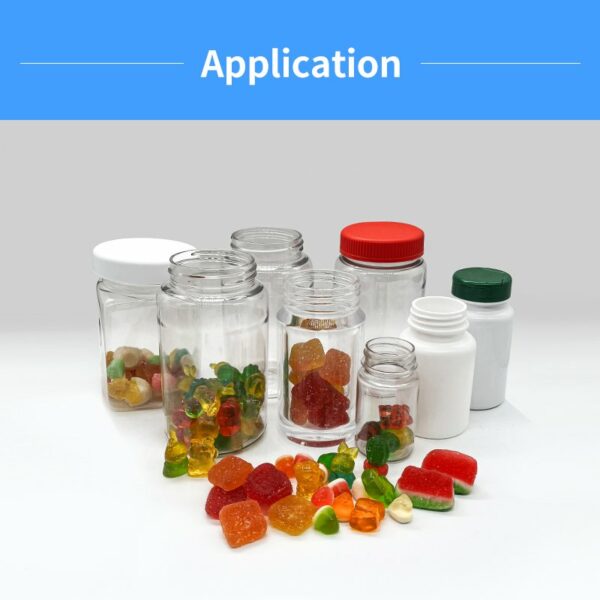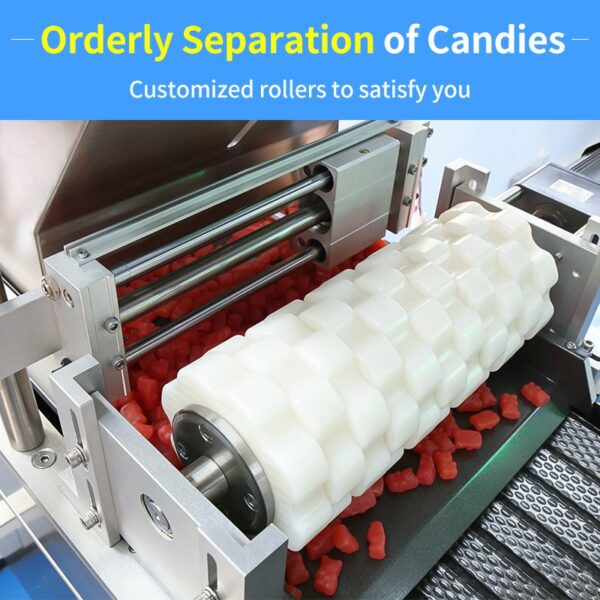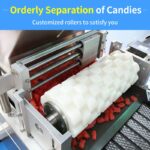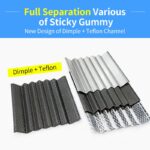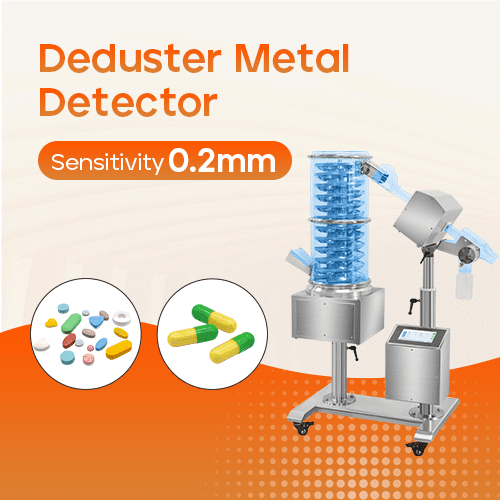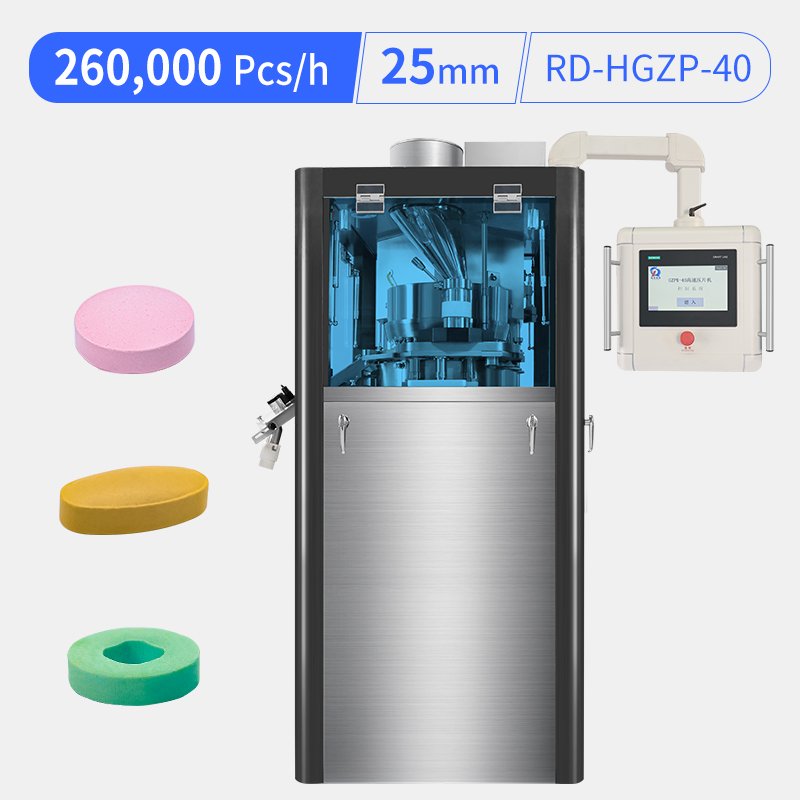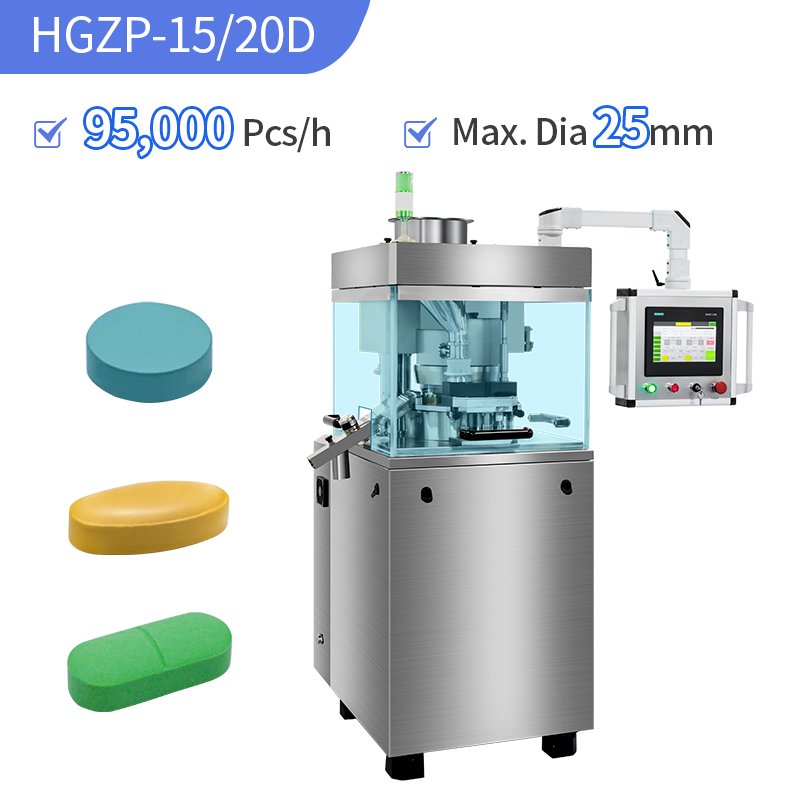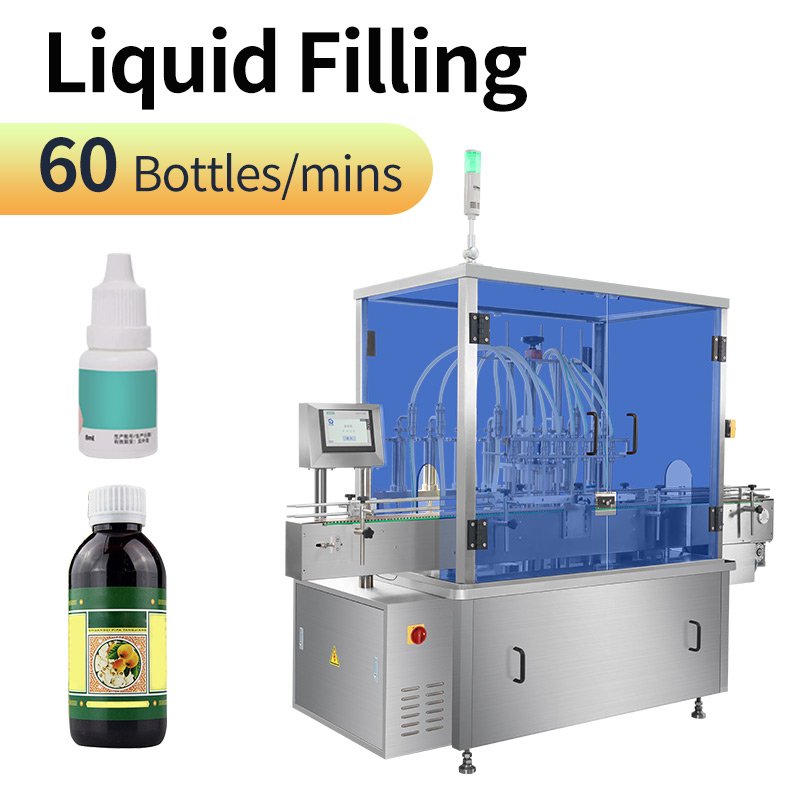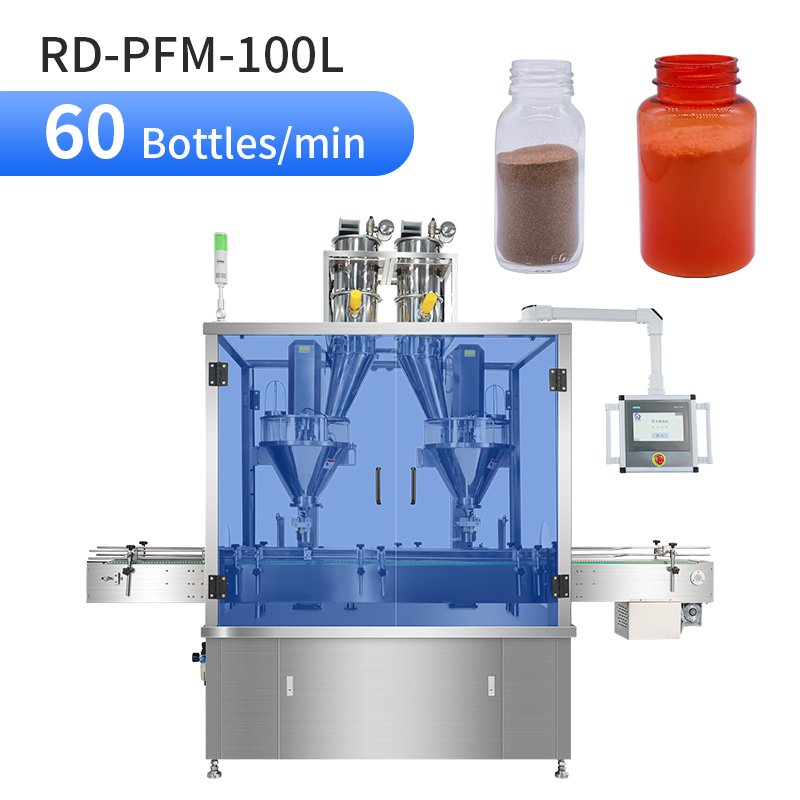1. Routine Cleaning Procedures (Per Shift/Daily)
1). Power Safety Protocol
Deactivate all power sources (unplug electrical/pneumatic connections)
Wear nitrile gloves and safety goggles before servicing.
2). Surface Debris Removal
Vibratory Channel & Conveyors:
Use soft-bristle brushes or industrial vacuum (≤15 psi)
Apply compressed air (≤40 psi) to hidden crevices
Optical Components:
Gently wipe sensors/cameras with lint-free cloth + food-grade isopropyl alcohol (70-75%)
3). Non-Stick Coating Care
Clean PTFE/silicone-coated surfaces with pH-neutral detergents (e.g., diluted Dawn)
Never use abrasive pads or caustic chemicals
4). Lubrication Check
Inspect guide rails/bearings for sugar crystallization
Apply NSF H1-approved lubricants sparingly
2. Scheduled Maintenance (Weekly/500 Operating Hours)
1). Component Deep Cleaning
Disassembly Steps:
Soak vibratory bowl in enzymatic cleaner (≤120°F)
Remove conveyor tracks; steam-clean hardened residues
2). Sensor Calibration
Test photoelectric sensitivity with multimeter
Clean vision system lenses using Zeiss wipes
3). Mechanical Adjustment
Replace worn divider blades (tolerance: ±0.02″)
Rebalance vibration motor amplitude
3. Comprehensive Service (Monthly/2,000 Hours)
1). Drive System Overhaul
Replace motor brushes >50% worn
Flush gear reducers with ISO VG 220 food-grade oil
2). Coating Restoration
Repair peeling non-stick surfaces via OEM recoating
4. Seasonal/Pandemic Maintenance
Humidity Control: Install silica gel packs during monsoon seasons
Long-Term Storage: Apply corrosion inhibitor + dust cover when idle >7 days
5. Critical Do’s & Don’ts
Safe Practices:
Always lock-out/tag-out before servicing
Dispose sugar waste per FDA 21 CFR 117
Prohibited Actions:
Never use acetone on plastic housings
Avoid metal scrapers on polished surfaces
Data-Driven Results: Proper maintenance maintains:
99.2% counting accuracy (vs. 94% with poor upkeep)
30% longer component lifespan
Expert Tip: Create color-coded SOP manuals with QR troubleshooting guides for rapid staff training.
